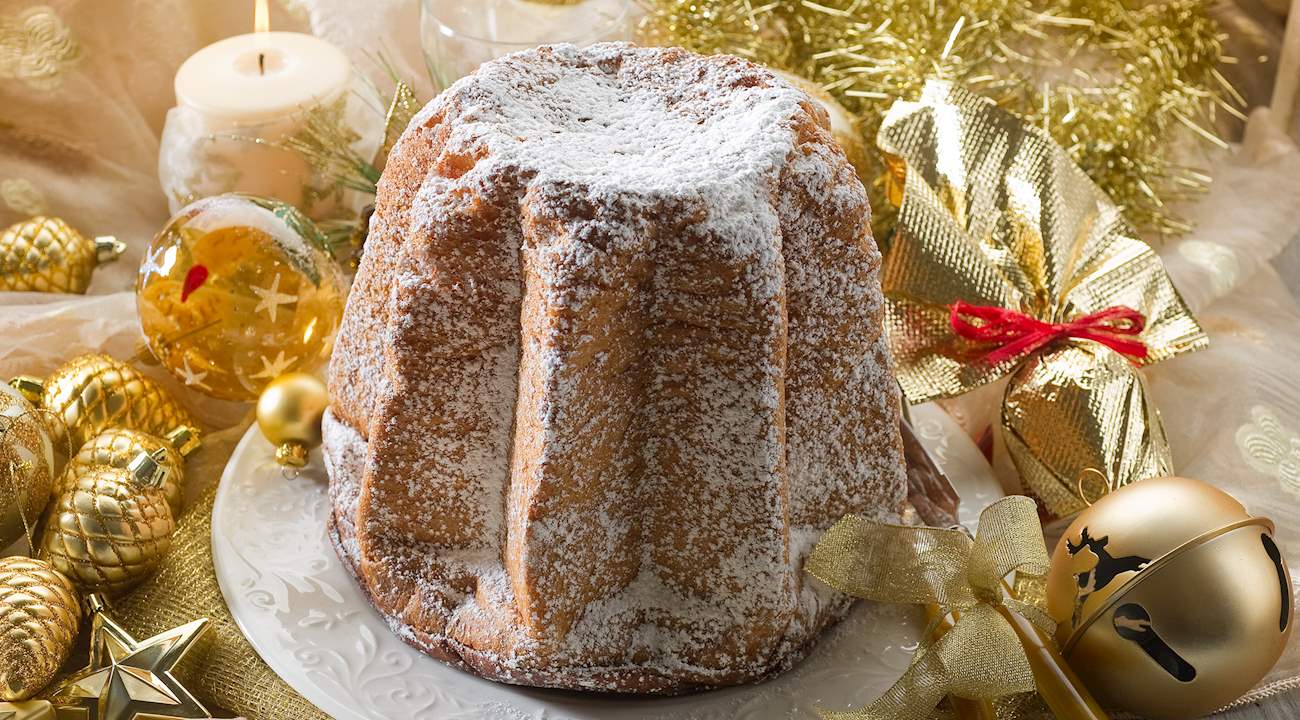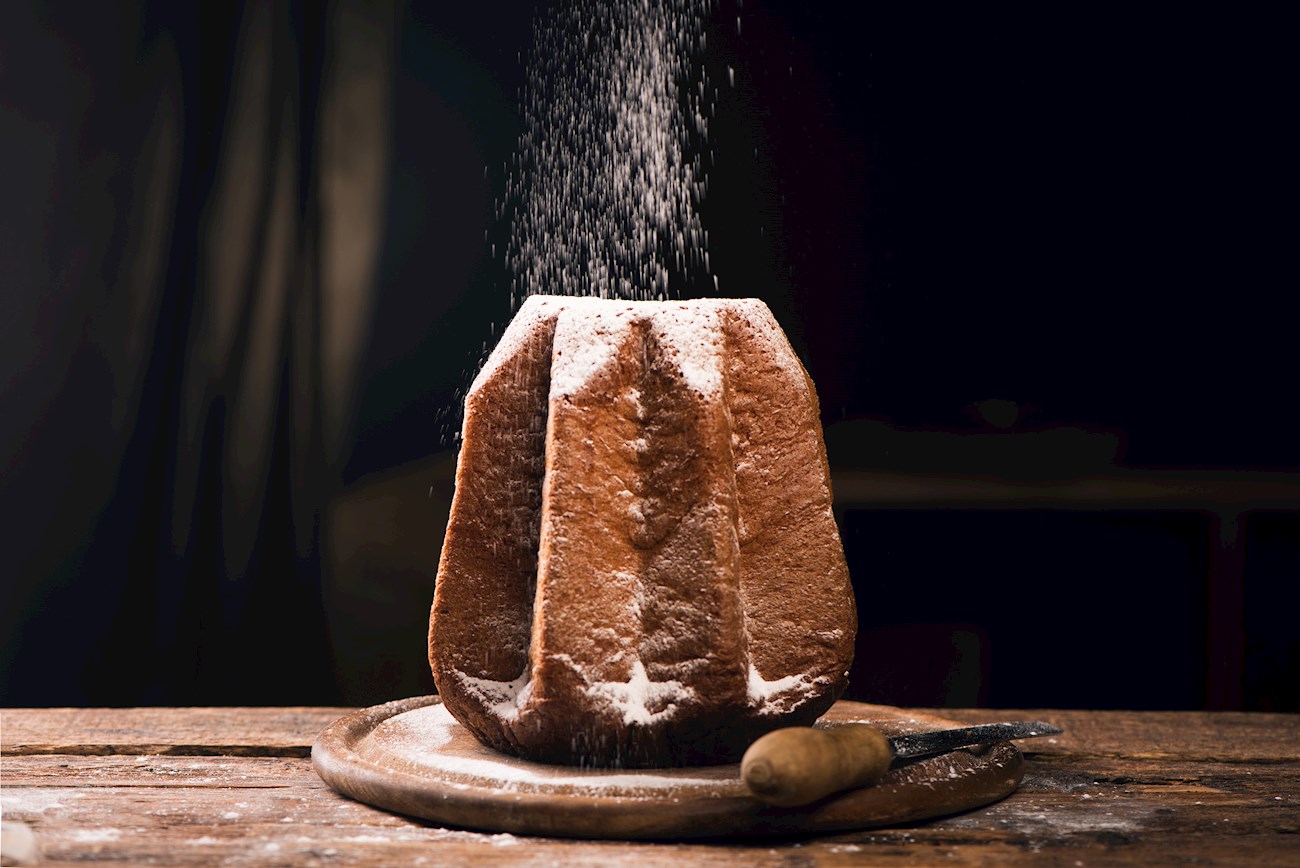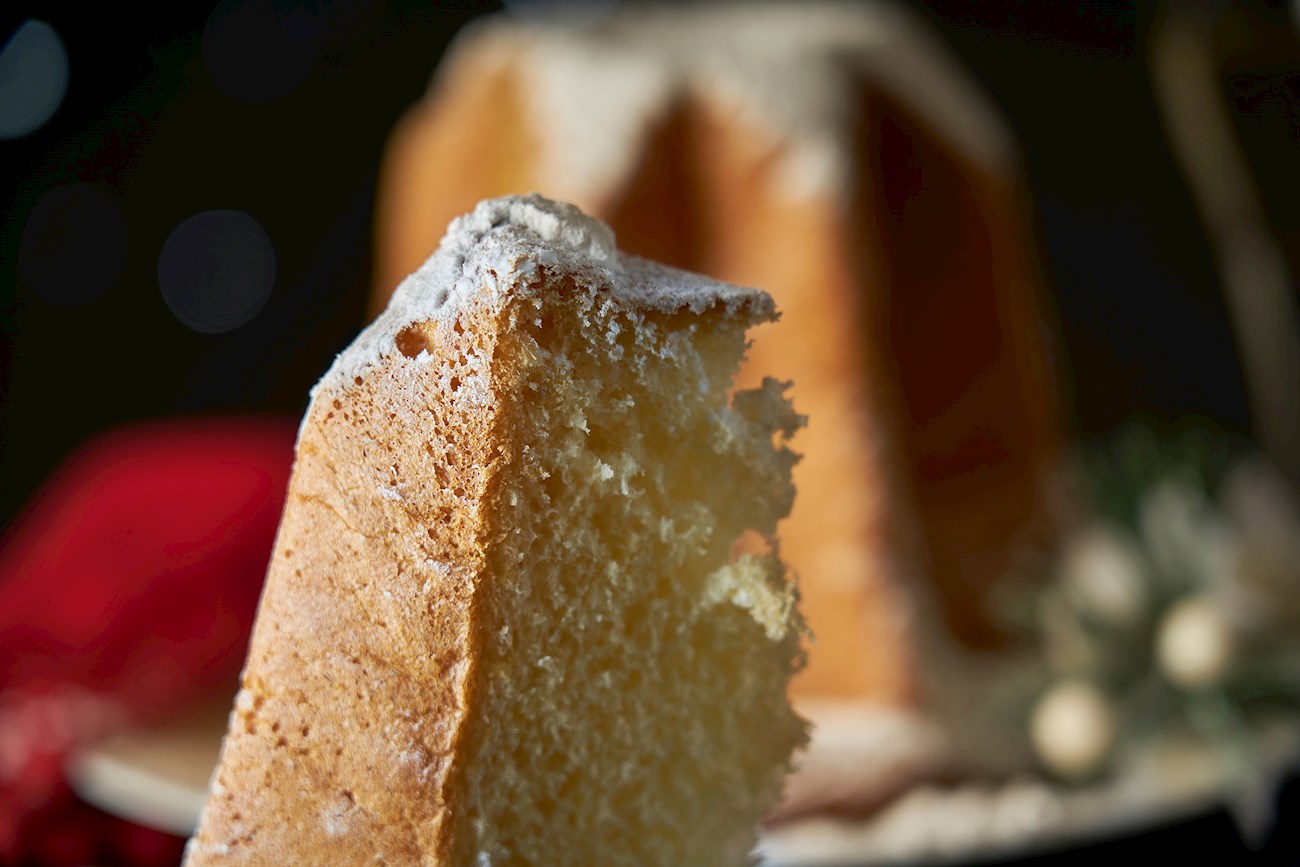Pandoro
(Pan d'Oro, Golden Bread)
This traditional Christmas bread hails from Verona. Its name is derived from the phrase pan d’oro, meaning golden bread, a reference to its yellow color which comes from the large amount of egg yolks used in the bread.
Pandoro is traditionally baked in a special star-shaped mold. Unlike it cousin panettone, it does not contain any nuts or dried fruit. The original version of this dessert was created in the 18th century, and it was a dish reserved for the aristocracy.
The pandoro we know today dates back to 1894, when baker Domenico Melegatti submitted a patent for a large-scale production process for the bread. This sweet, yeasty bread is often sprinkled with powdered sugar, resembling snow on mountaintops. The bread can be served with sauces and creams such as mascarpone, whipped cream, or melted chocolate, while some cooks like to hollow it out, then fill it with custard, berries, or ice cream.
Pairing tips
Recioto di Soave
Sweet Recioto di Soave wines are produced in the province of Verona with dried Garganega grapes as the principal variety, while the most common addition to the ... Read more
Alta Langa
Alta Langa is an Italian appellation for white and rosé sparkling wines located in the provinces of Alessandria, Asti, and Cuneo. Chardonnay and Pinot ... Read more
Asti Spumante
Asti Spumante is a fully sparkling wine produced under Asti DOCG appellation. It is made from Moscato Bianco grapes and most commonly by Charmat method, in which ... Read more
Moscato d'Asti
Made entirely from the Moscato Bianco grapes, Moscato d'Asti is a fragrant, not overly sweet fizzante (semi-sparkling) wine that is produced mainly in the province ... Read more
Recipe variations
Authentic Pandoro
READY IN 2d 13hAdhering to the traditional pandoro recipe, making one requires at least a couple of days of full dedication and the use of home-made or purchased mother yeast (sourdough starter) that has been refreshed for seven days. In addition to mother yeast and two dough preparation stages, this pandoro recipe also calls for making an aromatic emulsion that gives the bread a citrusy aroma.
Fresh Yeast Pandoro
READY IN 1d 2hMaking a pandoro with mother yeast can be a daunting task for inexperienced bakers. That is why you will see many adaptations of the traditional recipe utilizing fresh instead of mother yeast because it leads to a less time-consuming culinary endeavor. Nonetheless, fresh yeast pandoro is a great gateway recipe that will give you a glimpse of how beautiful and engaging the process of making pandoro actually is.
Lemon-Flavored Pandoro
READY IN 12h 20minThe following recipe is a fairly common twist on the traditional pandoro recipe, and that is to add lemon zest to the dough, giving the bread a more citrusy edge, which balances out its natural sweetness.
Pandoro Authentic recipe
Adhering to the traditional pandoro recipe, making one requires at least a couple of days of full dedication and the use of home-made or purchased mother yeast (sourdough starter) that has been refreshed for seven days. In addition to mother yeast and two dough preparation stages, this pandoro recipe also calls for making an aromatic emulsion that gives the bread a citrusy aroma.

























